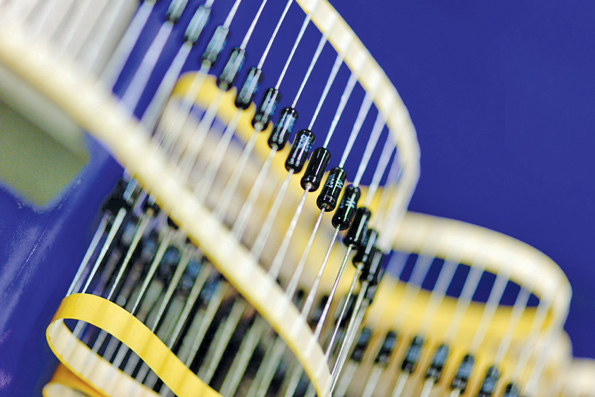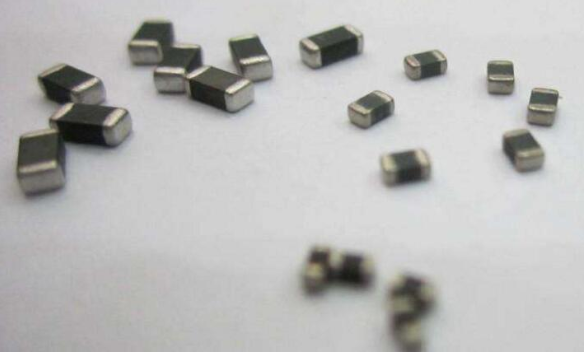Position:Home » Technical Articles
Resistors in Analytical Equipment And Instrumentation
Writer:Microhm Page View:Date:2019-05-24
Precision resistors deliver the tight tolerances, low temperature sensitivity, and high stability demanded across a broad range of laboratory analysis equipment . The input stage of an instrument with a resistive sensor, such as a thermistor in a precision temperature-monitoring circuit, consists of a bridge of resistors, which must be closely matched in value. Since it is the ratio between values that matters rather than absolute values themselves, the maximum difference between TCRs (that is, the tracking TCR) is more important than the absolute TCR.
Most through-hole precision resistors are available in matched sets with specified ratio tolerance and tracking TCR, providing the best available precision. Options for the precision through-hole resistor approach range from semi-precision devices to ultra-precision devices capable of equalling the performance of costly metal foil technology using advanced metal film techniques.

The figure of most value to designers is the maximum total error in resistance value at the end of product life, or before scheduled re-calibration if this is applicable. Known as the total excursion, it is calculated from the root of the sum of the squares (RSS) of applicable, statistically independent short-term and long-term factors. Applying this calculation to an ultra-precision resistor demonstrates an order-of-magnitude improvement in total excursion compared with standard precision resistors.
Alternatively, where space is a major consideration, surface-mount device (SMD) thin-film products with multiple elements can provide high precision in a compact single-component solution.The precision SMD offering includes conventional thin-film chip resistors using nichrome elements. When evaluating the long-term stability of resistors, designers should consider several environmental tests. Some of these are early-life factors, such as exposure to solder heat. Others like TCR are reversible. Nevertheless, most are long-term factors. Best practice is to design based only on the figure that most closely reflects operating conditions.

Shelf life metrics apply where loading is negligible and the environment is benign, but the load figure should be applied where power dissipation is the main factor. For humid environments, designers should focus on measuring the long-term damp heat figure. In all these tests, most of the value change happens within the period of the test, as the value will tend to stabilize.
Most through-hole precision resistors are available in matched sets with specified ratio tolerance and tracking TCR, providing the best available precision. Options for the precision through-hole resistor approach range from semi-precision devices to ultra-precision devices capable of equalling the performance of costly metal foil technology using advanced metal film techniques.

The figure of most value to designers is the maximum total error in resistance value at the end of product life, or before scheduled re-calibration if this is applicable. Known as the total excursion, it is calculated from the root of the sum of the squares (RSS) of applicable, statistically independent short-term and long-term factors. Applying this calculation to an ultra-precision resistor demonstrates an order-of-magnitude improvement in total excursion compared with standard precision resistors.
Alternatively, where space is a major consideration, surface-mount device (SMD) thin-film products with multiple elements can provide high precision in a compact single-component solution.The precision SMD offering includes conventional thin-film chip resistors using nichrome elements. When evaluating the long-term stability of resistors, designers should consider several environmental tests. Some of these are early-life factors, such as exposure to solder heat. Others like TCR are reversible. Nevertheless, most are long-term factors. Best practice is to design based only on the figure that most closely reflects operating conditions.

Shelf life metrics apply where loading is negligible and the environment is benign, but the load figure should be applied where power dissipation is the main factor. For humid environments, designers should focus on measuring the long-term damp heat figure. In all these tests, most of the value change happens within the period of the test, as the value will tend to stabilize.
Keywords:resistors
Latest News
- Resistor's role in measuring and correcting LED,,,
- Single through-hole resistors' characteristics ,,,
- Why shunt resistors for current sense applicati,,,
- Metal-film resistors with small size, high resi,,,
- 36W High-Current Shunt Resistors MMS8420,,,
- 1W Surface Mount Resistor MPR1206,,,
- An Overview of Microhm Electronics' Resistor Pr,,,
- More anti-sulfur resistors used in harsh envir,,,
- Resistance changes with temperature,,,
- 140W TO247 High Power Heatsinkable Resistor,,,
- MMS5930 is ideal for current sensing in industr,,,
- Shunt resistors selection for engineers' design,,,
- Considerations for choosing precision resistors,,,
- Ceramic Encased Cement Resistors NWH Series for,,,
- Resistors for Passive Balancing in Battery-Pow,,,
Hot Articles
- Microhm will take part in 10th Automotive World,,,
- Thanks for Visiting Microhm's Booth E5-5706 in ,,,
- Resistors in Short Supply: Blame Cars,,,
- New lunch: High Power Precision Shunt Resistor,,,,
- How to Test a Resistor,,,
- Innovative Technology, Future Electric: Electri,,,
- What is Precision Resistors?,,,
- SMD Resistors Sizes and Packages,,,
- The Construction and Features of Metal Film Res,,,
- What is a TO-220 Resisor?,,,
- Hot Selling Products: Precision Shunt Resistors,,,
- How to Calculate the Equivalent Resistance Valu,,,
- What is a Fixed Resistor?,,,
- Resistors in LED Circuits,,,
- Resistors Types and Materials Overview,,,
Resistance applications
- Why Zero-Ohm Resistors?,,,
- Heater Blower Motor Resistor in Air Conditioner,,,
- Surface Mount Resistor's Size and Package ,,,
- Industrial Roberts Applied to Solar Photovoltai,,,
- The Measurement Accuracy of Automotive Shunt is,,,
- Miniature future for passive electronic compone,,,
- Select the Right Resistor for Harmonic Filterin,,,
- The Four Important Functions of Alloy Resistors,,,
- Shunt Resistor MMS8420 for High Current Stable ,,,
- Precision Resistors' Construction and TCR,,,
- The Main Application for High Precision and Low,,,
- Urbanization Development Bringing the Transform,,,
- Difference Between High Precision Resistors and,,,
- Carbon Film Resistors' Features and Application,,,
- BMS for New Energy Vehicle,,,
